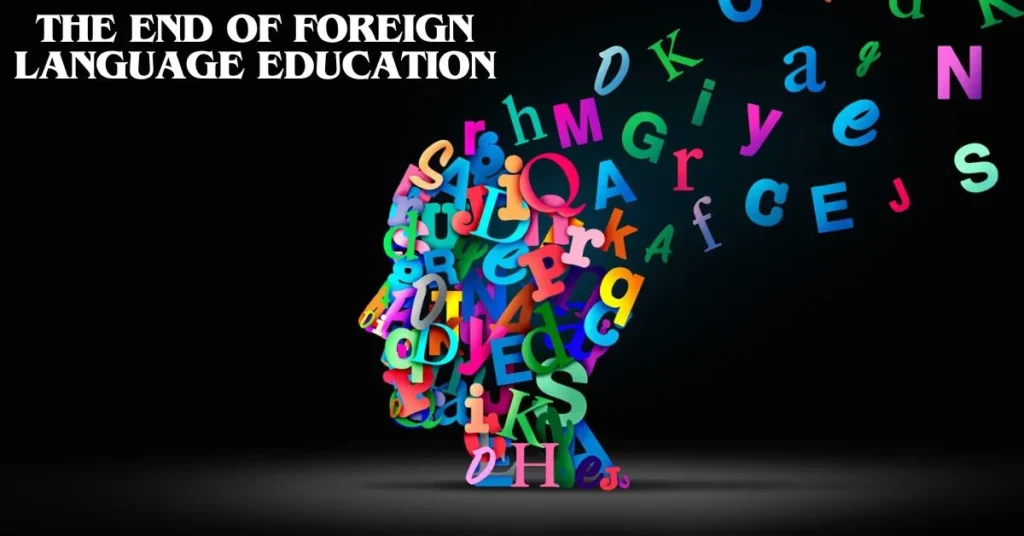Foreign language education has long been a cornerstone of academic curricula worldwide. Yet, as we stand on the cusp of rapid technological advancements and changing educational priorities, the question arises: Are we witnessing the end of foreign language education? This thought-provoking topic invites us to explore the future of learning languages in an increasingly digital and globalized world.
The Shift in Educational Priorities:
In recent years, educational priorities have shifted significantly. There’s a growing emphasis on STEM (Science, Technology, Engineering, and Mathematics) education, driven by the demand for tech-savvy professionals. Foreign language education, once deemed essential, is now often seen as a secondary priority.
The impact of this shift is evident in many schools and universities. Language programs are being cut, and resources are being reallocated to subjects perceived as more critical for future job markets. But does this trend signal the end of foreign language education, or is there more to the story?
The Rise of Technology in Language Learning:
Technology has revolutionized many aspects of our lives, and language learning is no exception. With apps like Duolingo, Babbel, and Rosetta Stone, learning a new language has never been more accessible. These tools offer interactive and personalized learning experiences that can rival traditional classroom settings.
Artificial Intelligence (AI) plays a pivotal role in this transformation. AI-powered language learning platforms can tailor lessons to individual needs, provide instant feedback, and even simulate real-life conversations. This technological leap begs the question: Do we still need formal foreign language education when we have such powerful tools at our fingertips?
Globalization and the Dominance of English:
As globalization continues to knit the world closer together, English has emerged as the dominant global language. In business, science, and technology, English is often the lingua franca. This dominance reduces the perceived necessity to learn other languages, especially for native English speakers.
However, this trend can be misleading. While English proficiency can open many doors, being bilingual or multilingual offers distinct advantages. It enhances cognitive abilities, cultural understanding, and can provide a competitive edge in the global job market. So, while English is crucial, dismissing the value of other languages might be shortsighted.
The Cultural Significance of Language Learning:
Learning a foreign language is more than just acquiring a new skill—it’s a gateway to understanding different cultures. Languages carry the essence of a culture’s history, traditions, and values. When we learn a language, we gain insight into the worldviews of its speakers.
The end of foreign language education could lead to a loss of cultural appreciation and understanding. As we become more interconnected, the ability to communicate across cultures becomes increasingly important. Language learning fosters empathy and cross-cultural connections, which are invaluable in our diverse world.
The Role of Policy in Language Education:
Educational policies significantly influence the status of foreign language education. In many countries, policy decisions are shifting focus towards subjects deemed essential for economic growth. This shift often sidelines foreign language programs.
However, some nations recognize the importance of multilingualism and are taking steps to promote language learning. For example, the European Union encourages citizens to learn at least two foreign languages. Such policies highlight the value placed on linguistic diversity and cultural exchange.
The Future of Foreign Language Education:
Despite the challenges, the future of foreign language education isn’t entirely bleak. Innovative approaches and technologies offer new possibilities. Blended learning models, combining traditional teaching with digital tools, can enhance language education. Virtual exchange programs allow students to practice languages with native speakers from around the world, fostering real-world communication skills.
Moreover, there’s a growing recognition of the cognitive benefits of bilingualism. Studies show that learning languages improves memory, problem-solving skills, and even delays the onset of dementia. As these benefits become more widely known, there may be a resurgence in the value placed on foreign language education.
The Role of Educators in Preserving Language Learning:
Educators play a crucial role in preserving and promoting foreign language education. Passionate and innovative teachers can inspire students to see the value of learning a new language. By integrating cultural elements and real-life applications into lessons, educators can make language learning more engaging and relevant.
Furthermore, collaboration among educators worldwide can lead to the sharing of best practices and resources. This global network can strengthen language programs and advocate for their importance in a well-rounded education.
The Impact of Language Learning on Personal Growth:
Learning a foreign language isn’t just about practical benefits; it also contributes to personal growth. It challenges individuals to step out of their comfort zones, enhances problem-solving abilities, and boosts confidence. The journey of mastering a new language teaches perseverance and adaptability.
In a world where adaptability is increasingly valued, these skills are crucial. Language learning encourages a growth mindset, helping individuals become lifelong learners who are open to new experiences and perspectives.
Overcoming Barriers to Language Education:
Several barriers hinder the continuation of foreign language education, such as budget constraints, lack of resources, and varying educational priorities. Overcoming these challenges requires a collective effort from policymakers, educators, and communities.
Investing in teacher training, providing access to digital learning tools, and fostering partnerships between schools and cultural institutions can strengthen language programs. Additionally, raising awareness about the benefits of multilingualism can shift public perception and garner support for language education.
Conclusion: A Balanced Approach to Education
While the end of foreign language education seems plausible given current trends, it’s not an inevitable outcome. Balancing technological advancements with the irreplaceable value of human interaction and cultural immersion is key. By recognizing the multifaceted benefits of language learning, we can advocate for its place in modern education.
Foreign language education is not just about communication; it’s about understanding, connecting, and growing as global citizens. As we navigate the future of education, let’s ensure that learning languages remains an integral part of our journey.







